Formula Selva V
Travel Options: 160, 170, & 180 mm
Wheel Size: 29’’
Offset: 43 mm
Stanchion Diameter: 35 mm
Spring: Air
Axle: 15 x 110 mm Boost
Stated Weight: 2,030 g (w/o fender or axle quick release lever)
Blister’s Measured Weight: 2,067 g
MSRP: €1,250
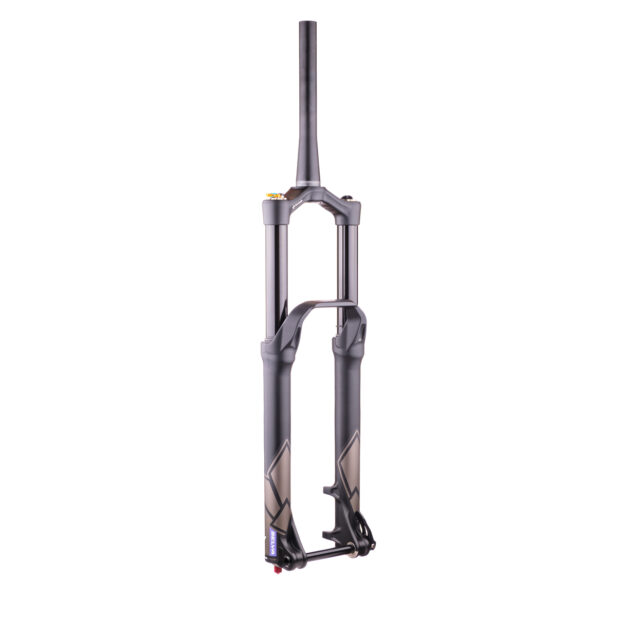
Intro
When the current crop of burly long-travel single crown forks (Fox 38, RockShox ZEB, etc.) first started showing up, they were marketed as an option for folks who wanted a beefier, stiffer chassis than options like the Fox 36 and RockShox Lyrik, and were willing to take a weight penalty for it. But in the years since, a lot of those lighter, smaller-stanchioned models have dropped the option for 170+ mm-travel configurations, leaving their bigger, burlier siblings as the only game in town.
Formula has taken a different approach, offering the dual-crown Enduro-oriented Belva for folks who want a stiffer chassis, and continuing to support long-travel setups in their 35mm-stanchioned Selva single crown.
Now there’s a new version of the Selva — the Selva V — and while Formula says it gets a stiffer chassis than the prior-generation Selva, the new one still has 35 mm stanchions, and comes in under 2,100 grams — 200-300+ grams lighter than the big 38 mm stanchioned options from other manufacturers (and about 300 g lighter than the Belva).

The Selva V also gets a new air spring and some other updated features compared to the prior generation version, and we’ve started spending time on the Selva V to see how it stacks up. BLISTER+ Members and folks with our Digital Access Pass can check out our Flash Review for our early impressions; here, we’ll dive into the design and details of the Selva V.
Design & Features
The Selva V gets a new chassis and spring, paired with the same damper that they’ve been using in their Trail / Enduro forks (including the Selva and Belva) for a while now.
The Selva V sticks with the 35 mm stanchions of its predecessor, but gets new lowers with a 180 mm brake mount and a 15 x 110 mm Boost axle. It’s offered for 29’’ wheels only, and gets a new bolt-on fender as well.

Formula calls the Selva V an “All-Mountain / Enduro” fork and offers it in 160, 170, and 180 mm travel versions. A lot of other fork manufacturers have stopped offering 170+ mm travel forks with sub-38 mm stanchions, but Formula’s take is that stiffer isn’t always better, and by using smaller stanchions and a less beefy chassis, they’re able to make a lighter fork that’s less fatiguing on bigger days out — both due to the weight itself, and by reducing feedback compared to a stiffer chassis.
That said, the new lowers offer more bushing overlap than the prior version, and Formula says that the Selva V is stiffer for it. The Selva’s axle-to-crown height has also been increased by 8 mm (to 583 mm at 170 mm travel), which puts it in line with most other long-travel single crowns; the prior-generation chassis was notably short.
Formula’s forks have long featured floating pistons and sealheads in the spring and damper to help mitigate any friction / binding that arises from misalignment as the fork flexes. To use the spring side as an example, the air piston can rock slightly on its connection to the air shaft, so that the two don’t need to stay perfectly aligned, and the air shaft can move in the negative spring seal head as well. That continues in the Selva V.
Formula offered three different spring versions in the prior-generation Selva — the coil-sprung Selva C and two air-sprung variants, the Selva S and Selva R. The Selva S used an air positive spring with a coil negative one; the Selva R got independently adjustable air positive and negative springs.
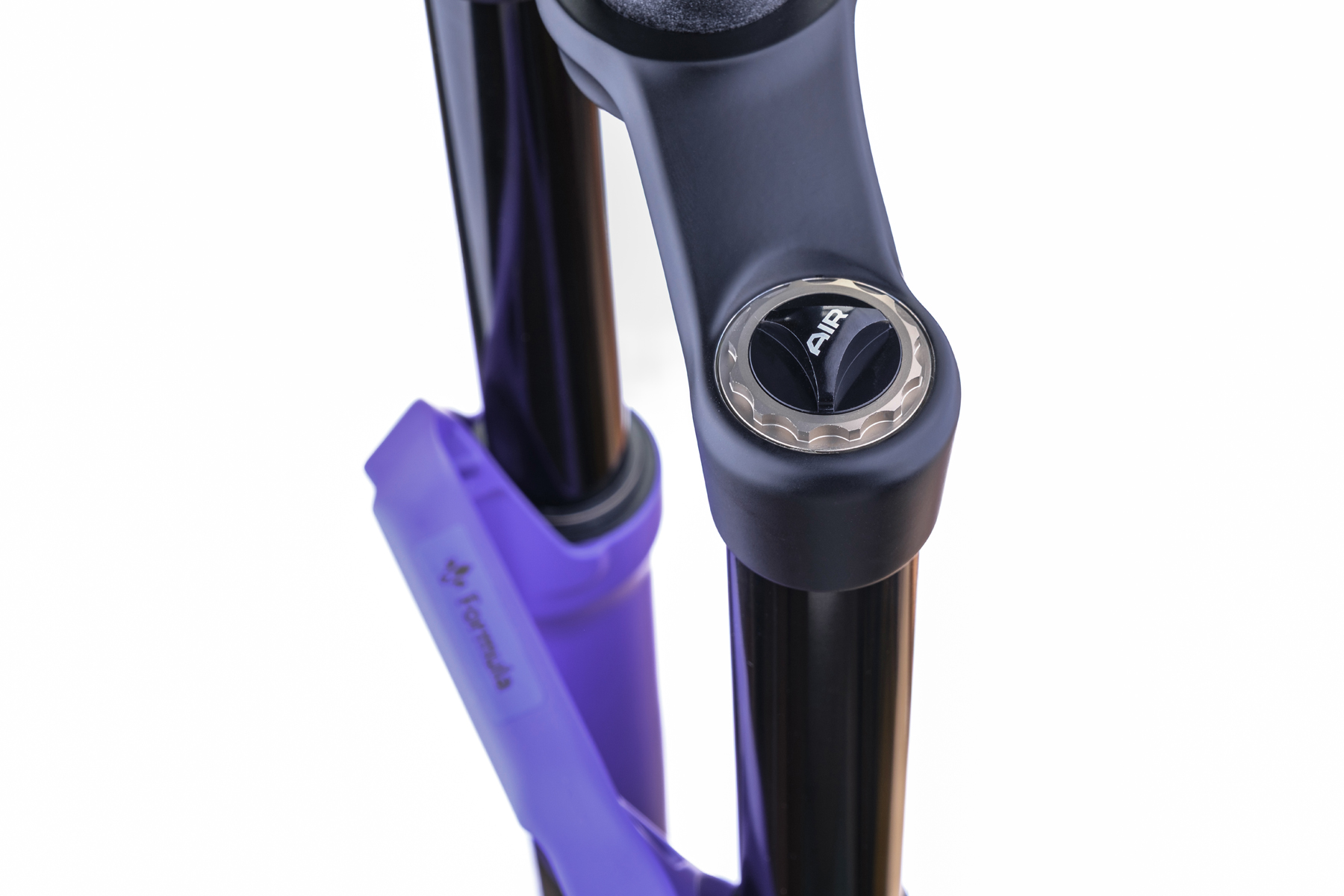
The Selva V uses an air spring with a self-equalizing negative chamber, but that pressure equalization happens differently from most other modern forks. Rather than using a dimple on the inside of the stanchion to bypass the air piston, a spring-loaded valve opens at the topout position, allowing air to pass between the positive and negative chambers. Formula’s take is that a dimple-based design requires a beefier seal to avoid wear as it passes back and forth over the dimple; with this design, Formula can use a lower friction seal without taking a hit to long-term durability.
Like most modern air-sprung forks, the Selva V uses volume spacers to alter the progression in the spring. There’s a twist, though: Formula’s “NeoPos” volume spacers are made from foam and are compressible, unlike more common rigid plastic ones. Formula has been using the NeoPos design for a while now, and the idea is to make for a more consistent, linear spring curve than you get with more typical volume spacers.
Rigid volume spacers mostly act on the very end part of the stroke, increasing bottom-out resistance but doing little to add support earlier in the travel. Because the NeoPos spacers are compressible, they can be quite large — so that progression starts to build earlier in the stroke — but compress as pressure in the fork increases deeper in the travel, so the end stroke ramp up isn’t as aggressive.

The damper in the Selva V carries over from the other Selva variants (and the Belva dual-crown Enduro fork) unchanged.
The biggest thing that sets it apart is Formula’s “Compression Tuning System” (CTS) — a set of swappable valves that allow you to change the compression tune in just a few minutes, without taking the fork apart. The CTS valve is housed underneath the low-speed compression knob; to swap the valves you remove the knob (secured with a set screw), unthread the valve (using a supplied pin spanner), and then reverse the process with the new one.
The CTS valves are color-coded for identification, and Formula breaks them into two distinct categories: the “Support Series” and “Traction Series.” The two series offer distinctly different-shaped compression-damping curves, with multiple options for how much damping they generate overall within a given series.
In short, the Traction Series valves (bronze, blue, and red, plus the special Josh Bryceland edition) offer a progressive compression damping curve with comparatively light low-speed damping that ramps up into much firmer damping at higher shaft speeds. The Support Series valves (purple, gold, orange, green, and titanium) all offer more low-speed compression damping than the Traction Series versions, but build damping force much more slowly as the shaft speeds increase. The lighter Support Series valves (e.g., purple) have a notably digressive compression damping curve; as you work your way firmer in the range, the curves get more linear.
[A linear damping curve means that the amount of damping increases in proportion to the speed at which the damper is compressing (e.g., twice as much damping at 2 m/s than at 1 m/s, and twice as much again at 4 m/s). A digressive curve still builds more damping force at higher shaft speeds, but does so more slowly than a linear one; a progressive one ramps up more quickly at higher shaft speeds.]

The Selva’s damper also features adjustable rebound, a lockout lever at the crown, and an adjuster that controls how firm (or not) the “lockout” is when engaged. There’s no high-speed compression adjustment knob, but the swappable CTS valves fill that role instead.
The Selva V ships with the Gold CTS valve installed and the Blue one in the box; additional valves are available separately if you want to experiment more. Another nice touch is that Formula includes the new bolt-on fender, a top-cap removal tool, extra oil for servicing the fork down the line, and a shock pump with the Selva V
FULL REVIEW
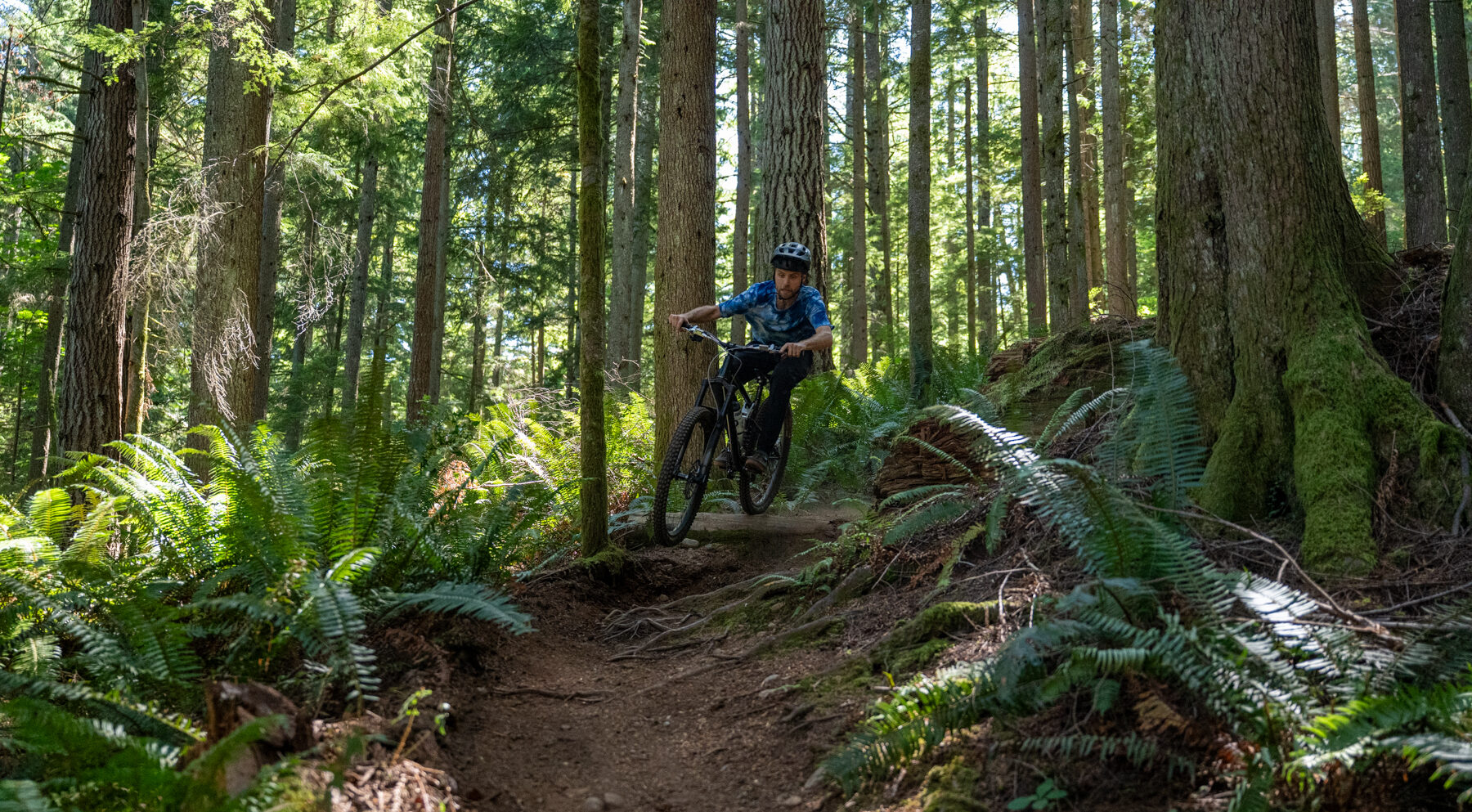
Formula has been making suspension for quite some time now, and has never shied away from doing it their own way. Their CTS valve system isn’t like anything else out there; they’ve got five different fork spring designs in their current lineup — four of them in the Selva family alone; they’ve got a dual-crown Enduro fork with the Belva; and more.
Given all that, it’s perhaps unsurprising that they’ve taken an unconventional approach to the chassis design of the new Selva V, too. But in an era where longer-travel forks are getting bigger, beefier, and heavier than ever, does the light, 35mm-stanchioned Selva V have its place? And how does it perform overall? Here’s our take.
On-Trail Performance
Probably my biggest question about the Selva V going into my testing was, how would the new air spring design perform? There’s a lot I liked about the performance of the Selva’s dual-crown sibling, the Belva, when I reviewed it a little while back, but I found its single-chamber air spring with a coil negative spring to introduce more setup compromises than I wanted, particularly in balancing initial sensitivity and midstroke support.
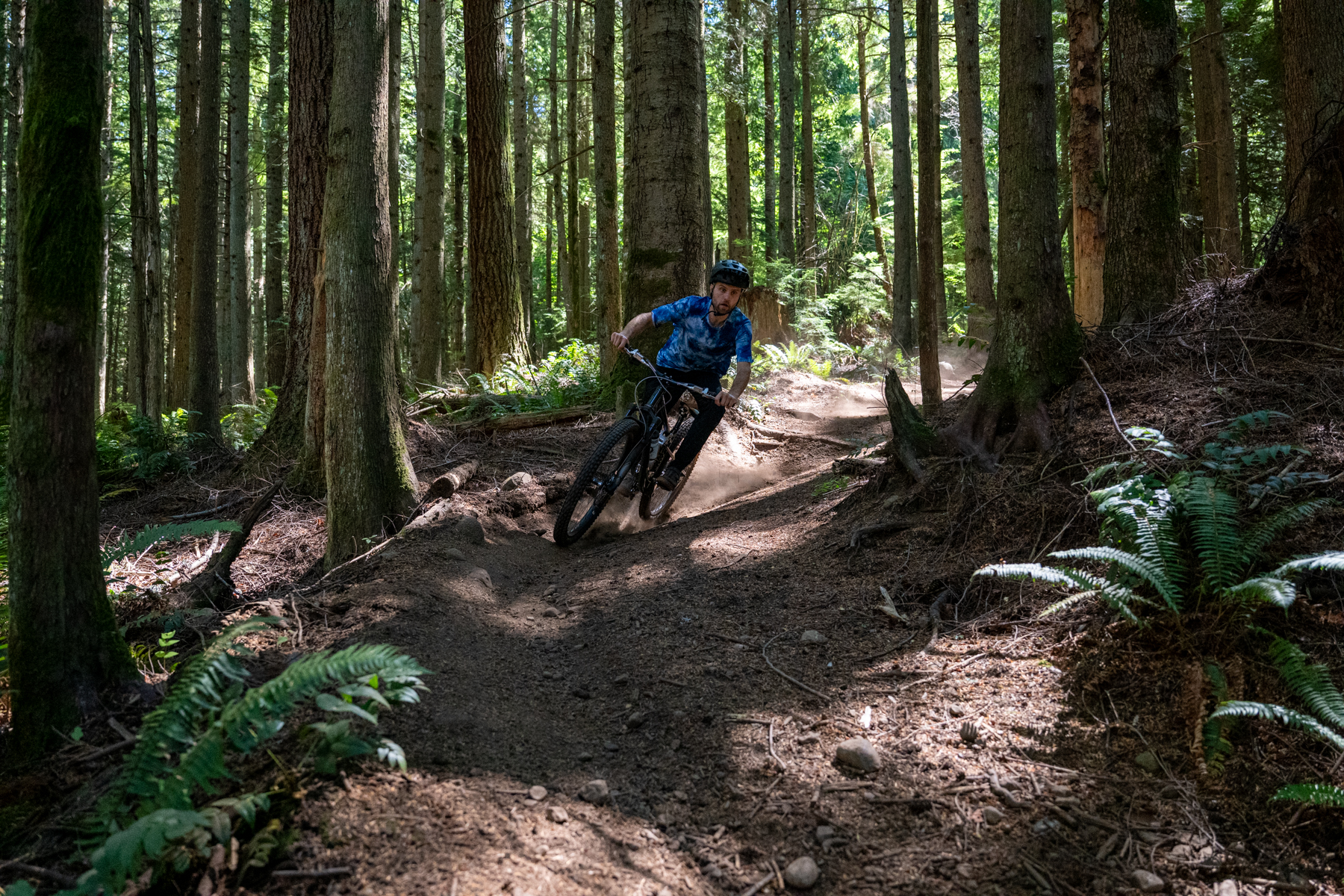
Happily, the new spring employed in the Selva V is a big improvement. The Selva V’s small bump sensitivity is much better than that of the Belva, and there’s far less of a soft-feeling portion of the stroke around the sag point to need to tune around.
In fact, the support offered by the Selva V’s spring early in its travel is one of its most standout features — particularly given that it pairs that support with pretty good small bump sensitivity, too. A lot of fork manufacturers have been touting bigger and bigger negative chambers for increased initial sensitivity. While those designs tend to make for a fork that feels very supple and free-moving near the top of its travel, that soft-feeling portion of the spring curve tends to mean that you just sag farther into the travel off the bat, and can feel somewhat mushy / lacking in support and liveliness.
I really like the balance that Formula struck with the Selva V. It doesn’t provide quite the same sensation of being so soft off the top that you can make the fork start to sag by staring at it hard that you get with, say, the RockShox ZEB or Fox Podium, but the Selva V rides higher in its travel and feels much more lively and energetic for it — and, again, its small bump sensitivity in most real-world situations is still relatively good.
The Selva V wouldn’t be my first recommendation for someone who specifically wants a fork that feels ultra-grippy and glued to the ground at all times, but the support and liveliness that it gets back in trade have genuine upsides — I think especially for the sort of rider who’s also interested in a notably lightweight longer-travel fork, and doesn’t want their Enduro bike to just feel like a steamroller at all times. It’s a coherent, cohesive package that feels a bit different from most of the other options out there, in a way that will absolutely appeal to the right riders.
As for the updated Selva chassis, it’s noticeably less stiff — both torsionally and fore-aft — than the crop of modern 38mm-stanchioned options (RockShox Zeb, Fox 38, etc.), but Formula has a point when they say that stiffness isn’t necessarily a more-is-more situation. Formula’s take is that by not making the Selva V massively stiff, it transmits less feedback to the rider, and can help reduce fatigue over long days in the saddle in doing so.
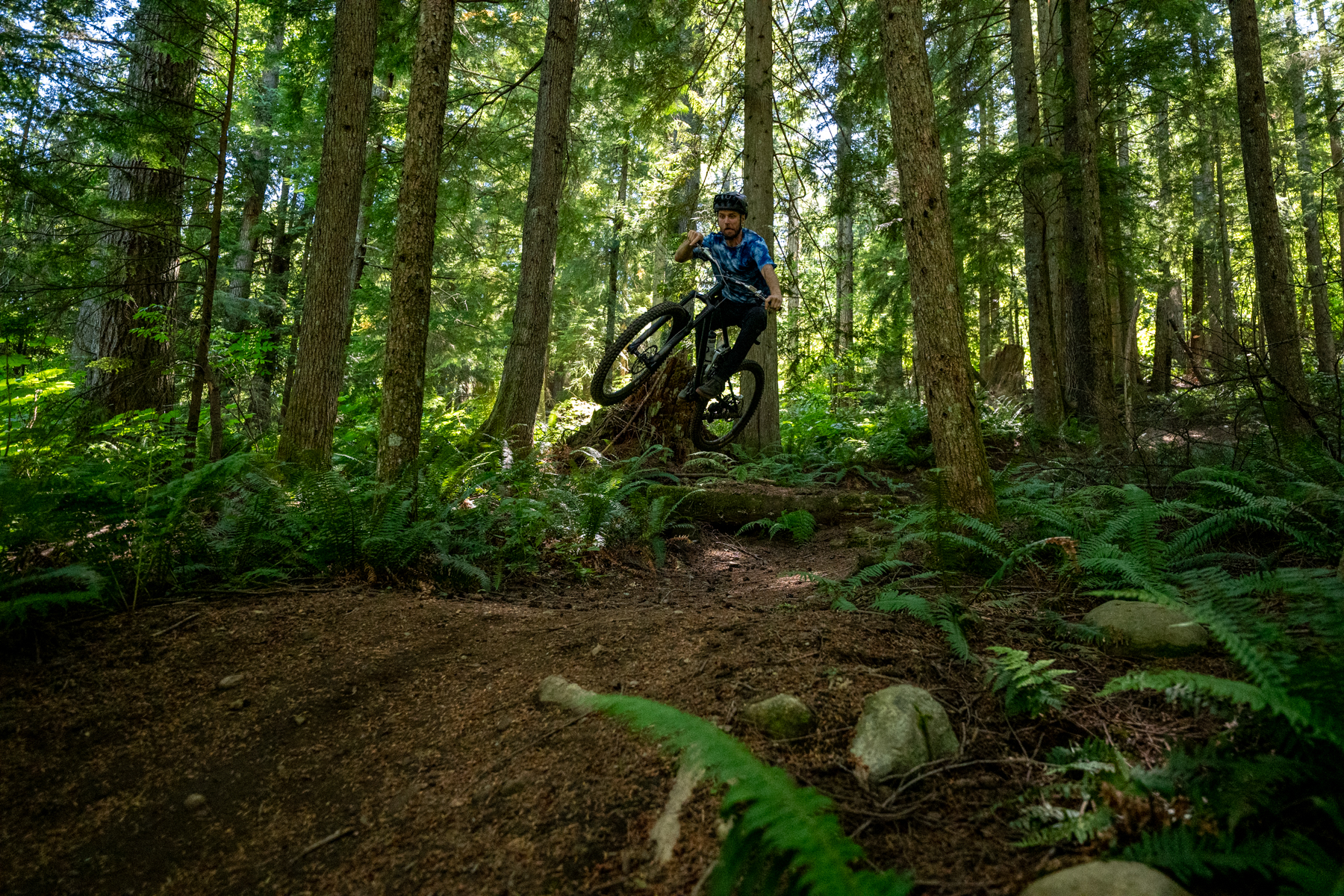
There’s something to that, especially on trails where you’re running into a lot of mid-sized impacts at not-wildly-high speeds, and doubly so if a lot of those impacts are coming from off-camber roots and the like. The Selva V feels like it’s able to track a little more cleanly than torsionally stiffer options in those circumstances, and is less prone to pinging off of stuff and having the front wheel kick out. And despite not feeling massively stiff, the Selva V does a good job of not feeling like it’s binding up badly, even in situations where the chassis is likely flexing an appreciable amount.
Where I have found myself wishing for a bit more chassis stiffness, at times, is under really heavy braking on very steep trails. Specifically, I’m talking about fore-aft stiffness — I’m plenty happy with the Selva V’s steering precision, even if it’s not strictly the stiffest option out there. But there are times — think hauling on the brakes when you’re nearing the catch berm at the bottom of an especially steep chute — where the Selva V starts to flex fore-aft appreciably, and diminishing front wheel grip momentarily as it chatters back and forth somewhat.
To be clear, I don’t think that’s going to be a big deal for a lot of folks. We’re talking about something that I noticed from time to time on truly steep trails when I was asking a whole lot of the Selva’s chassis, and I don’t think the Selva V fares notably poorly there relative to other forks in its weight class. It’s just a tradeoff that feels somewhat inevitable when comparing a smaller, lighter fork like the Selva to something bigger and beefier — and I can get the modern crop of 38mm-stanchioned single crowns to do something similar under the right conditions, too. The bar at which it feels noticeable on those heavier options is just appreciably higher. Speaking of which:
At 2,067 grams, the Selva V is a lot lighter than the RockShox Zeb Ultimate (2,390 g) or Fox 38 Grip X2 (2,440 g), to say nothing of the Fox Podium (2,756 g). The weight of the Selva V is more in line with the lighter, smaller-stanchioned offerings from those bigger brands (i.e., the Fox 36 and RockShox Lyrik), but neither of those can be run at 170 or 180 mm travel, unlike the Selva V. If you want 170+mm of travel without the weight and stiffness of the bigger options, the Selva V is one of the few remaining options — and a genuinely good one, rather than just being the default answer.
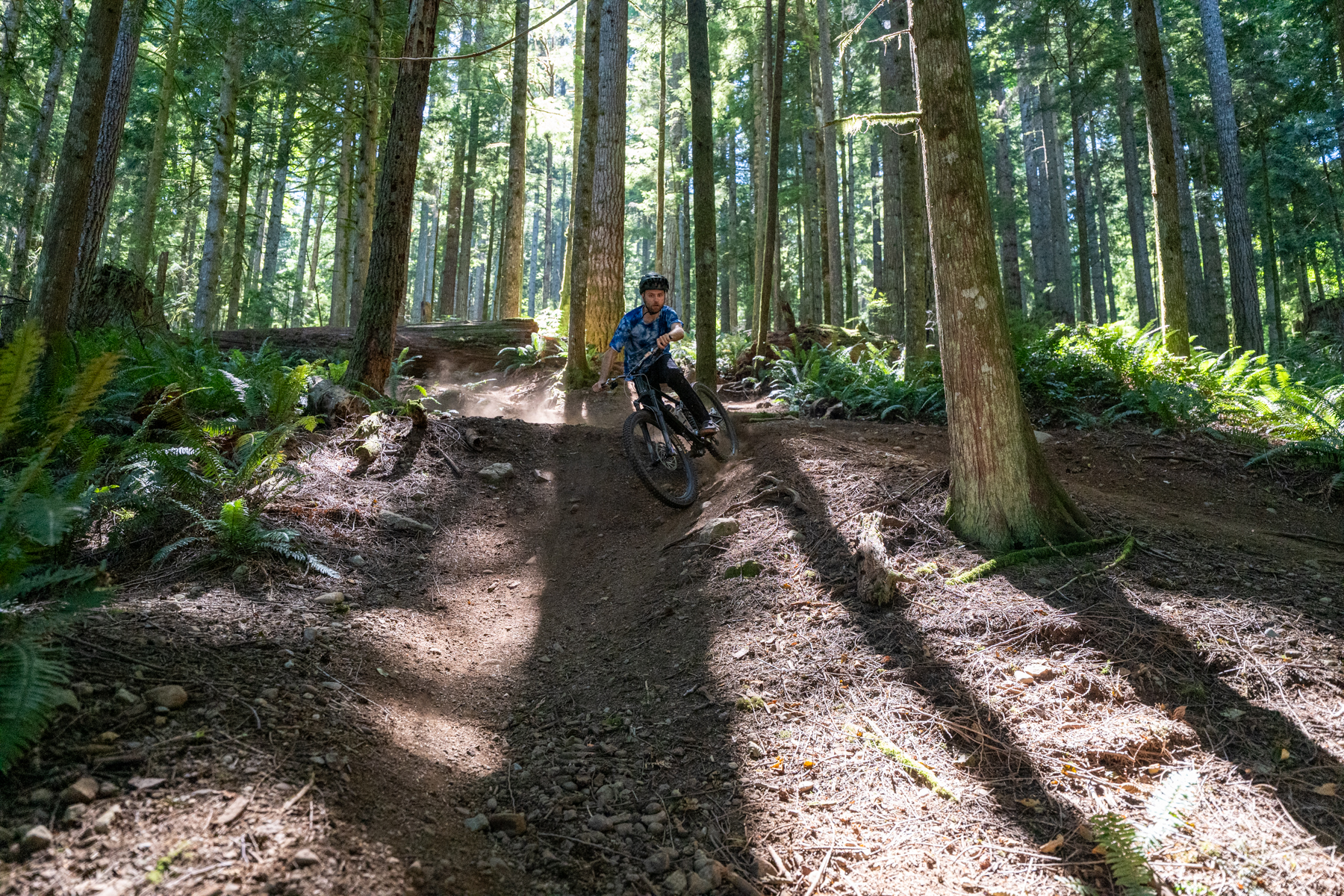
I’ve got fewer new thoughts about the CTS damper in the Selva V. Formula took the “if it ain’t broke, don’t fix it” approach to that side of the fork, and it, predictably, performs just like the version employed in the Belva. It’s consistent, performs well, and the swappable CTS valves make an obvious, substantial difference to the fork’s performance, just as Formula claims.
I experimented with a bunch of the different CTS valves, and arrived on the Red one as my preferred option — I tend to like pretty firm high-speed compression damping in general, and especially given the very good support provided by the Selva V’s air spring, I didn’t feel as much need to run a bunch of low-speed compression as I might otherwise. That said, I did land on running the low-speed compression adjuster near the middle of the range with the Red valve, and also got along pretty well with the Green valve with the LSC adjuster opened most of the way up. That setup still felt like it offered a bit more damping at lower shaft speeds than my preferred setup on the Red valve, but wasn’t terribly far off, either.
Big picture, the CTS damper works well, swapping the valves is very quick and easy, and doing so makes a clear, obvious difference to the damper’s performance. The range of available options is huge, and if you’re the sort who’s inclined to tinker and take the time to find your ideal setup, there’s a lot that you can do to dial in the damper performance without needing to meaningfully take it apart.
Who’s It For?
There are a few answers here. The first and maybe most obvious one is that the Selva V is for folks who want a long-travel single-crown fork that’s substantially lighter than most of the other options in that class, and are either willing to give up a bit of chassis stiffness for it, or would specifically prefer a less stiff chassis that doesn’t feel as ping-y and prone to deflecting off every little obstacle.

Bottom Line
The Selva V stands out from the long-travel single crown market in some interesting ways — and will readily appeal to the right riders for it. It’s very light, quite supportive while maintaining solid initial sensitivity, and the CTS damper is massively tuneable without needing to take it apart and re-shim anything. The chassis isn’t massively stiff, which has its pros and cons, but the upsides to that tradeoff — both the weight reduction and increased compliance — will be well worth it for some folks, and if you’re in that camp, the Selva V is worth a look.

I would be really interested to try it. I have a Selva and started it as a Selva S, and then converted it to C, and now it’s the best fork I’ve ever ridden. I would definitely try to convert it to V. I wasn’t super satisfied with S traction for my weight (145lb), and that was a reason for coil conversion, but V sounds really promising on paper. The CTS valves are a miracle, and I really enjoy swapping between the Green and Red valves depending on the conditions and my mood.